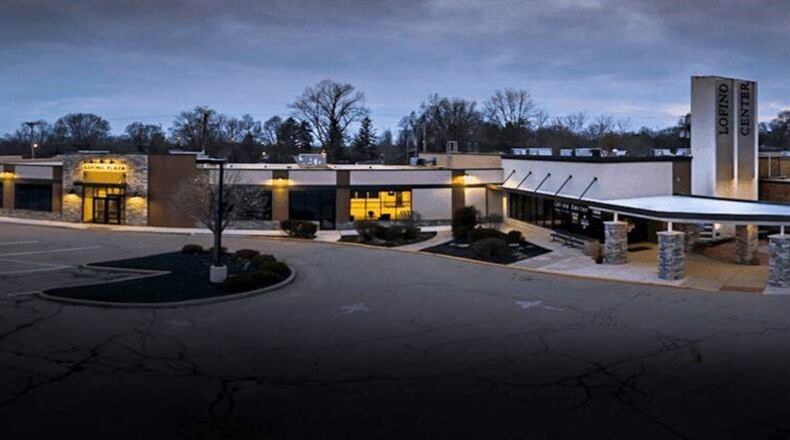Experts say reopening senior centers and serving an at-risk group can be done if guidelines are followed.
“If they take the guidelines seriously, the social distancing and hand washing and wearing a mask, I think that will go a long way toward keeping them safe,” said Jeff Webb, director of environmental health for Greene County Public Health. “Seniors, I think, tend to take that more seriously anyway.”
Masks or face coverings will be required for all visitors to the senior center at 3868 Dayton-Xenia Road in Beavercreek, and new cleaning and sanitization procedures have been put in place. Staff and volunteers were tested for COVID-19 before today’s opening and will continue to be tested every two weeks.
The cost of reopening
“It is important to realize that phase one of our reopening will be very different from our normal senior center operations. However, we hope that with each new reopening phase, we continue to get closer to ‘normal.' Our top priority right now is to provide the services our members need in the safest way possible,” said Beavercreek Senior Center Supervisor, Tyler Barlage.
Gov. Mike DeWine set a reopening date of senior centers and adult day centers for September 21 and laid out several measures the facilities will have to follow.
Senior centers reopening are required to open with a limited capacity. They need to screen all participants and staff and keep a daily log and test all staff and volunteers every 14 days and test some participants. Senior centers must also require all staff and participants to wear face coverings and use CDC guidelines for cleaning and disinfecting.
Connie Huntsman, president of the Ohio Association of Senior Centers (OASC), said many senior centers are choosing not to open because of the requirements. OASC worked with state to create the guidelines, except the testing requirement, Huntsman said.
“Many organizations have looked at the requirements and decided they were really hard to meet, especially the testing, which is almost impossible at times,” Huntsman said.
Some other senior centers have other things that they’re facing, like higher outbreaks, she said.
The Preble County Council on Aging will not be reopening.
Spokeswoman for the senior center Holly Steele said the testing requirement weighed on the decision not to reopen, but the main concern was the health and safety of their seniors.
Steele said the Preble County Council on Aging will continue to offer Meals on Wheels and transportation to some medical appointments, as they have throughout the pandemic.
In Preble County, Steele said her senior center started offering “Drive-thru Thursdays” where seniors can drive up and get a treat and a newspaper or some other information they might need.
Charles Lathrem Senior Center in Kettering will also not be reopening yet.
New normal
The Vandalia Senior Citizen’s Center reopened on Thursday, Oct. 1.
“Everything had to be thought through,” said Toni Williams, who has run the senior center for six years. “We’ve had to be very thoughtful and careful about how we reopen.”
Williams said she checks the temperatures of every person in the building. With social distancing, she is able to have about 80 people in the senior center. It normally holds about 200.
In Beavercreek, members are required to make an appointment before going to the senior center. Members will be asked screening questions and have their temperature taken before entering the facility. The classes and programs the Beavercreek Senior Center can offer are limited because of the reopening requirements. The center will continue to offer some virtual classes, too. The Beavercreek Senior Center will only be open Monday through Friday from 9 a.m. to 4 p.m.
Erin Harris, the recreation program supervisor, said the Beavercreek Senior Center is working to balance “healthy” in every sense of the word.
Harris said services may expand as the senior center and the state learn to programs safely.
Pandemic isolation
The main reason there is urgency to reopen the facilities is the isolation some in the senior population experience when the centers are closed.
“When we have to be isolated at home, we go home to your families and we’re there with our families, but many seniors live alone and they’re there all day, not working, and then at night you’re still there by yourself... you’re by yourself for 24 hours a day, that’s hard. Being closed for six months was very tragic for some seniors,” Huntsman said. “It can bring tears to your eyes when you see them so happy to be back among their peers. For a lot of seniors, a senior center is their life. It was a welcome relief for many.”
Bob Applebaum, a professor of gerontology at Miami University and director of the Ohio Long-Term Research Project, said 15 percent of women who are 85 and older are married and about 60% of men that age are married.
“I think that’s the reason the Ohio Department of Health and the Governor are allowing them to open up because there is mental health component,” Webb said. “These people are at home and lonely and don’t have anything to do. It’s good for their mental health to be able to associate with other people.”
Can senior centers reopen safely?
From a public health perspective, Webb said if people follow the guidelines, there is no reason this at-risk population can’t stay safe.
“Senior centers and adult day care centers should be reading up on the guidelines. It is important for them to read up on the protocols and guidelines so that they are keeping our older population safe and so they can educate seniors on what’s appropriate social distancing, hand washing, and so on,” Webb said.
Applebaum compared the decision to return to a senior center to the decision to send kids back to school or send Miami University students back to the dorms.
"This group of Ohioans is very susceptible, people rightfully so are nervous about catching COVID. You want to keep moving forward with life, but on the other hand there is no good solution to this. There are no good answers here, there are no perfect answers,” Applebaum said. “People have to look at their own situation.”
About the Author

